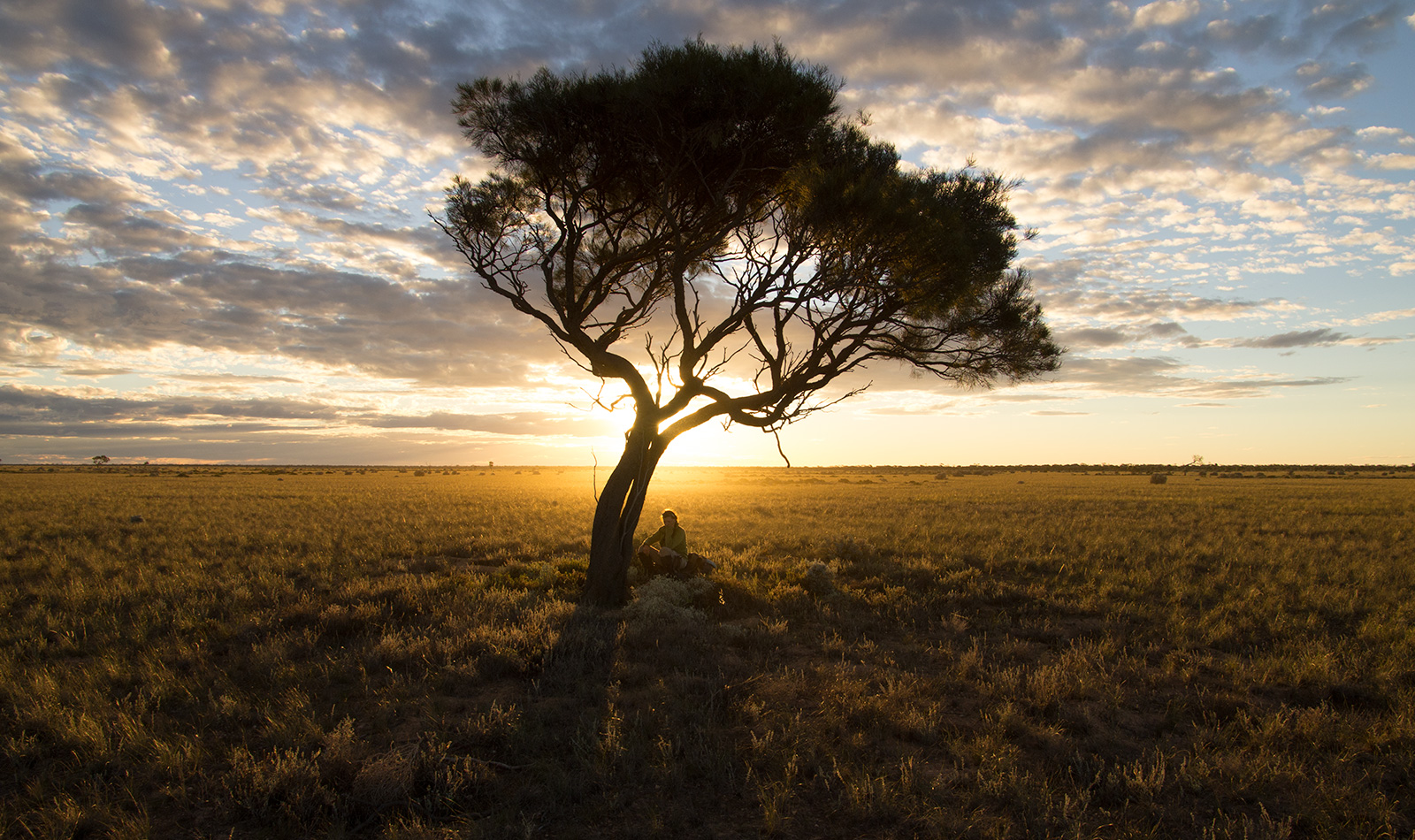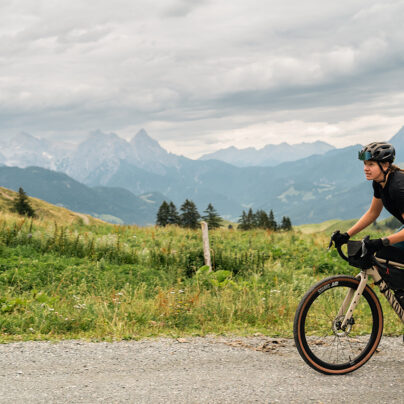A State Of Mind
An Interview with Sarah Marquis
Andrew Mazibrada // Photography by Sarah Marquis
“Above all else, adventure is a state of mind, a way to see things. It’s often a solitary process that awakens people’s fundamental principles, choices and curiosity. Setting off on an adventure is going beyond your limits, it’s feeling through your body, your senses and your spirit the foundations of your being, your very nature.”
This is how Sarah Marquis describes her philosophy, and her approach, to her incredible journeys. It all began when, aged just eight, Marquis went exploring with her dog. She left the family home in Montsevelier, Switzerland, one afternoon, without telling anyone where she was going, and discovered a cave. Beguiled by the bats hanging above her, she decided to spend the night.
She was 17 when she learned to ride a horse by crossing Central Anatolia in Turkey on horseback. As the new millennium dawned, she walked from the Canadian border to the Mexican border taking four months and six days – a “path full of obstacles” as she describes it, one of which included the first time she was ever arrested. Two years on, she spent 17 months walking 8,700 miles around the Australian continent. She would later spend eight months walking 4,350 miles through the Andes, but she really came to worldwide notice when, on June 20th 2010, aged 38, she walked away from the city of Irkutsk in Siberia, and headed south, alone. She finally arrived on the Nullarbor Plain in Australia on May 17th 2013, nearly three years later. What she found on that expedition, through a dangerous and hostile environment, is one of the most breathtaking adventures we have ever been privy to. Sidetracked interviews her to find out more about who Sarah Marquis really is, and what she has planned for the next few adventures.
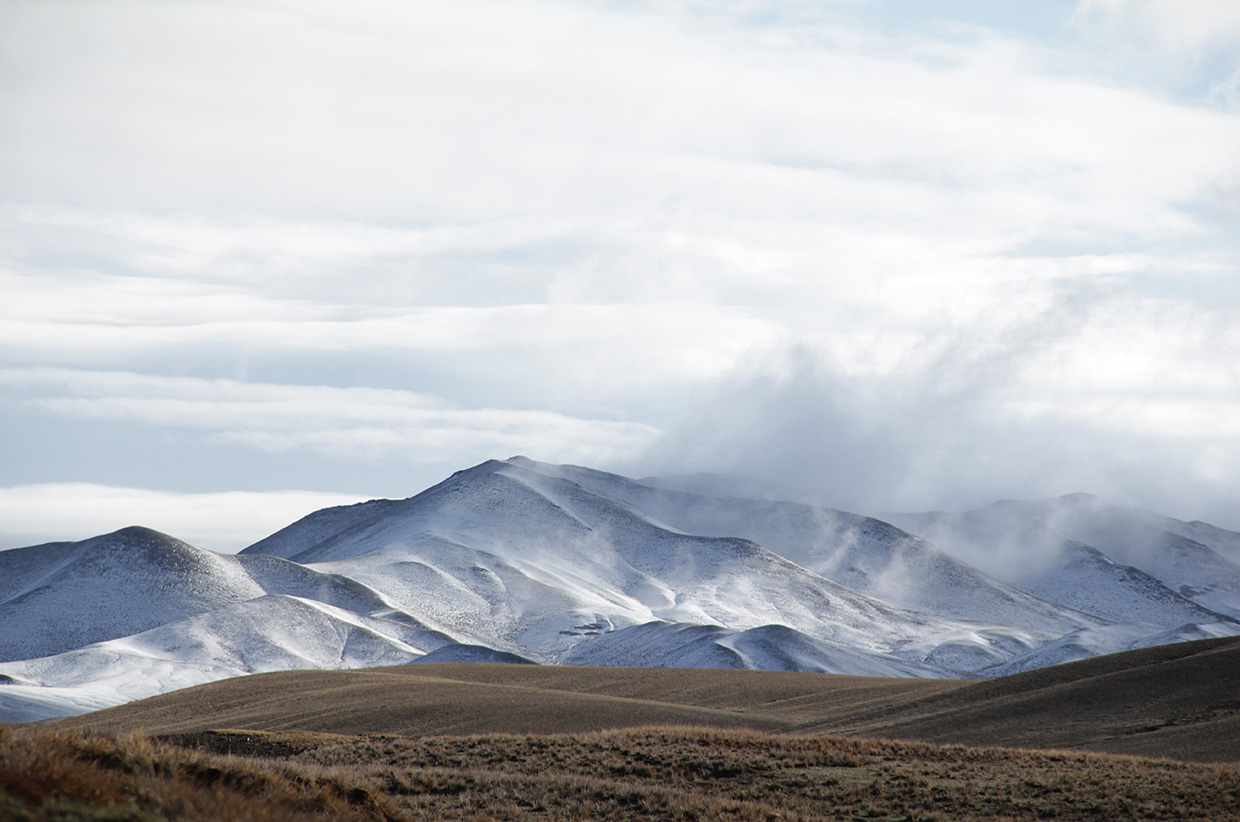
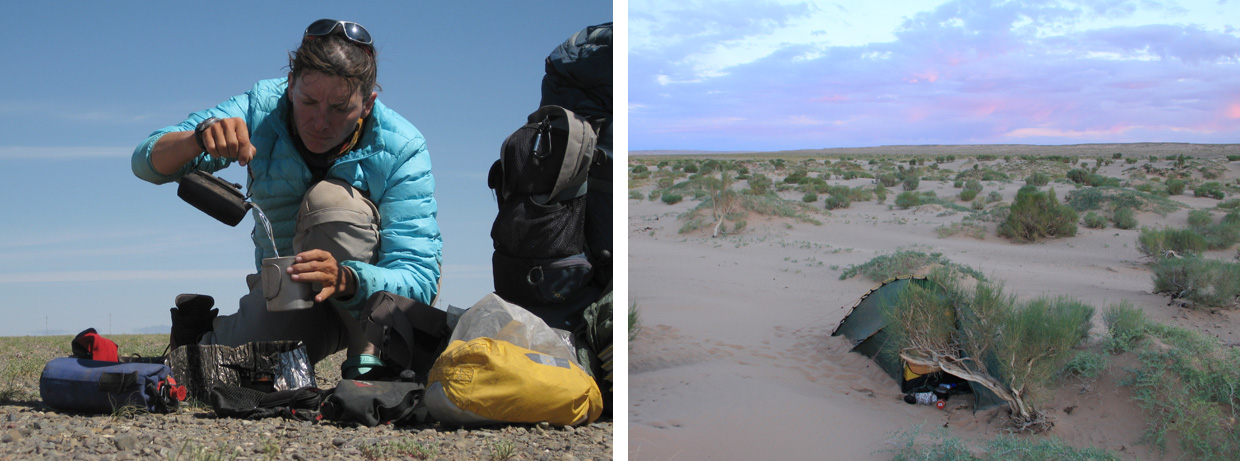
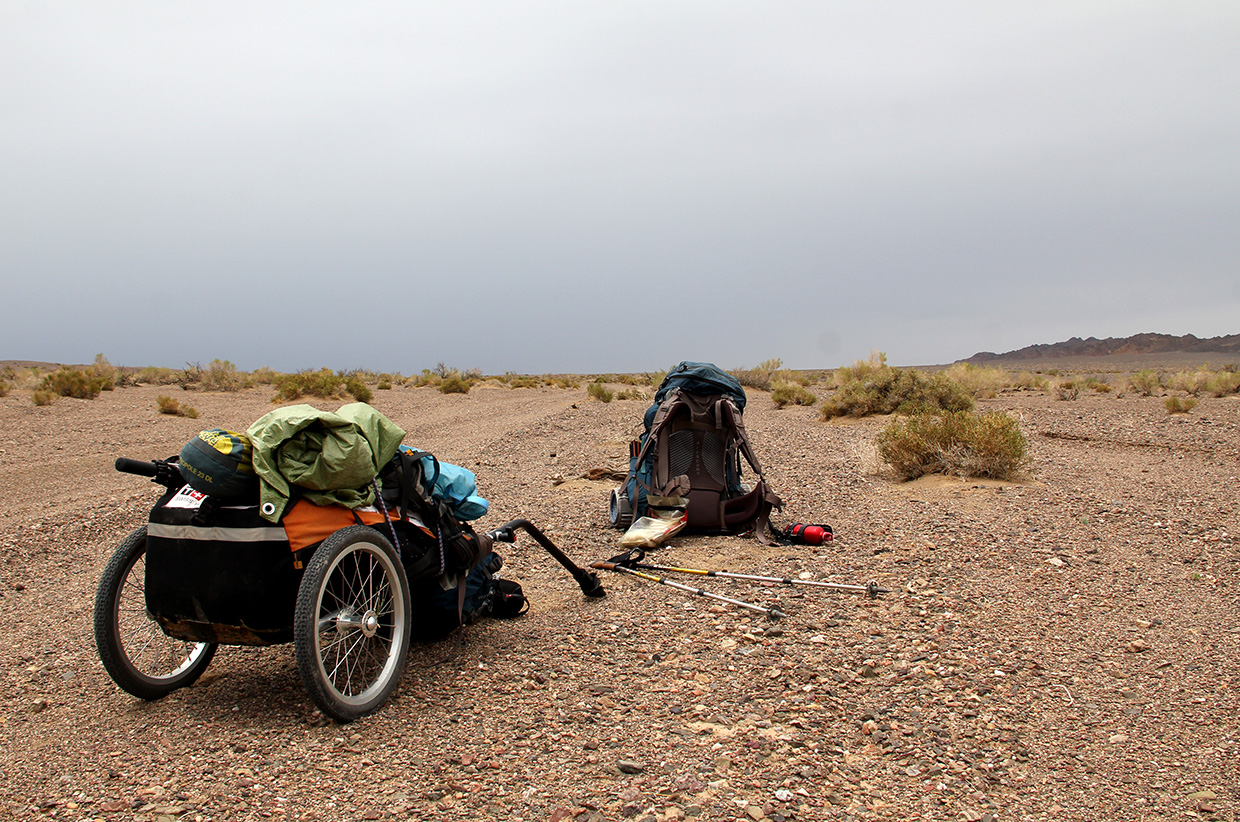
Sarah: It’s always been inside me. I was always curious about everything. I’m still just this little girl, perhaps a little older and bigger now, but I’m still amazed by everything around me. I never stop thinking about it. The forests in Switzerland still amaze me. I want to understand and feel things; I want to understand how things work. So often though, it’s through trial and error. When I was in New Zealand, in the South Island, I went for a four-day walking trip. I had no idea what walking was about – I was in my early 20’s back then – and I had nothing in my backpack that was right. It was raining hard, really miserable weather, but I loved it. I get into this kind of harmony with nature – everything goes wrong and then something happens to make it perfect.
I like this precious link we have with nature. My motivation to walk comes from a deep understanding of what lies between nature and humans. We need to understand nature more than we do, in order to survive. We are linked to this land, but we are abusing it. We are trying to find an intellectual answer to climate change, but it’s much deeper than that. We are still asking questions, but we should be acting now. We are still arguing about it – it’s like a kindergarten. We should be finding a solution and we should be hoping we can last as a human race. We are still focused on big business and making money. I am hoping that people individually get together and think differently.
You’ve been quoted as saying “I was born with two legs, so I decided to use them. I think that’s why we’ve got them.” What was the catalyst for the Siberia to Australia walk – what made you think of it?
There is a little town called Vevey by the lake where I live, and there’s a little organic shop there – I have known the owner for 20 years. I had my groceries, I waited to cross the road, and I saw a huge picture of the Mongolian steppe and I was suddenly drawn into that picture. That’s how it started. It’s always something small like that which starts my mind working.
Tell us about the planning you undertook – what issues did you consider, how did you choose your kit and how did you pay for it all?
I planned and prepared for two years and the trip itself took three. I had one chaotic room – usually my living room – with post-it notes all over the place, kit everywhere, topographic maps taped to every wall. This is how I prepare, this is my life. I learned about hundreds of plants in Australia so I could recognise them, but in fact it wasn’t of any practical help, apart from making me more confident. I understood the language, the type of ground, the condensation I could expect. I checked the weather reports for the last 20 years. Intellectually, you feel prepared and that is a major part of the process. You might not use everything you’ve learned, but having it there makes you more confident.
When you start walking, you let it all go – you need to use your instincts and what you have in your gut. That’s another world. The whole process of preparation helps you do that properly. You drop your skin of normal life and get out there like an animal. You need to peel back the layers until you are raw in the middle – that’s the preparation.
Most of the questions you’re asked seem to focus on the fact you’re a woman walking these great distances, rather than a man, and the peculiar challenges gender throws up – does it annoy you that, rather than exploring what you personally have achieved, interviewers seem focused on the fact you are woman doing all of this?
I am proud to be a woman, and sometimes I wish I had the man’s muscles and hair everywhere. I would like to be a man in an expedition and a nice-looking woman in normal life. It’s down to the fact I am proud to be a woman, and there are not that many adventurous women, it doesn’t matter in the middle of the Gobi desert – it’s inner strength that’s important, and there we are all the same.
How did you select a campsite and what was your nightly routine?
These were difficult countries. So, by 4pm, I was already looking for a place to stop. Especially in Mongolia and China, where the terrain offers no protection; it’s like a golf-green. I always wanted to find a depression in the ground so I could be protected from the crazy Mongolian wind, and it had to be a place where I could hide. These are two very different, but important criteria. Then I asked myself – do I like it? I always relied on instinct. If it seemed okay, I dropped my backpack and cart, and headed off to explore to see if it was safe. I needed to make sure I was out of sight and I needed to know what animals were around – I looked for tracks so I knew what visitors I might have during the night.
I took pictures too – this was my fun time and it was precious to me. I could walk around freely, without the pack and the cart. In the Gobi, I found amazing things: beautiful flowers, ibex, mouflon, rabbit. I was also looking for signs of water. If I hadn’t found any during the day, I would look for it during the night. Otherwise, I would collect condensation using a plastic bag – I did this a lot in the Gobi. That little evening walk energised me. Then I’d head back to camp and make tea. While I sat, I could feel and watch what was happening around me. If local people came, I would not stay there – I would leave and find somewhere else.
Over the years, being a woman walking alone has been a problem. I try to hide the fact I am a woman. The colour of my clothes matches the colour of the terrain, as does that of my tents. No one can see I am there. I try not to make fires, and I try to hide my footprints. I doubt I would be alive if I hadn’t done that. I always move on if I can feel my security is in any jeopardy. Night is my friend, I always walk in the night. Native people tend not to move at night – they have lots of superstitions: stories of wolves, ghosts and things like that, so I often move at that time. I know what to do to avoid problems – I have researched the culture and history of all of these countries. I knew, for example, that in China a woman alone might be regarded as a prostitute. For me, then, the answer was hiding. I could even smell the presence of humans in the air; and I can hear things even far away. I get transformed to this wild thing – all of us do in that situation. We are all animals, we have a basic animal connection, but we rarely get in touch with that side of us.
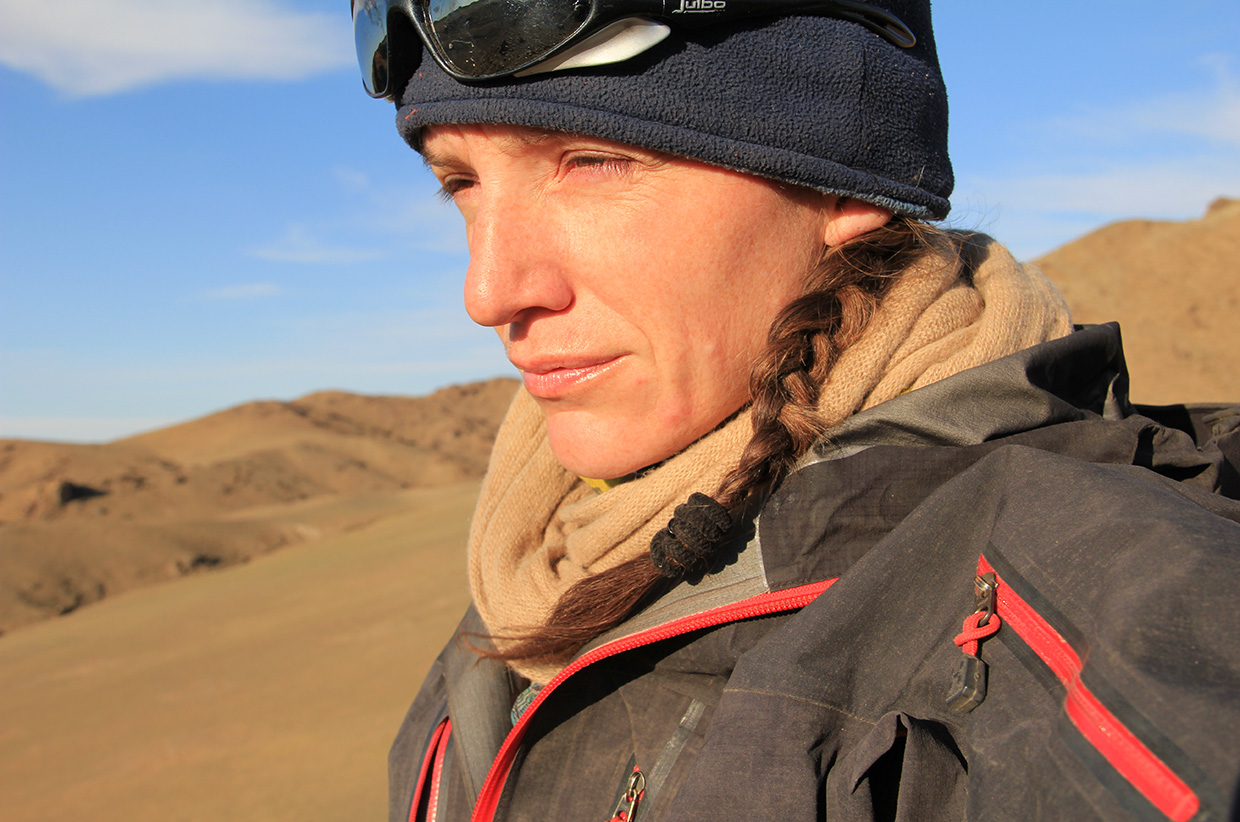
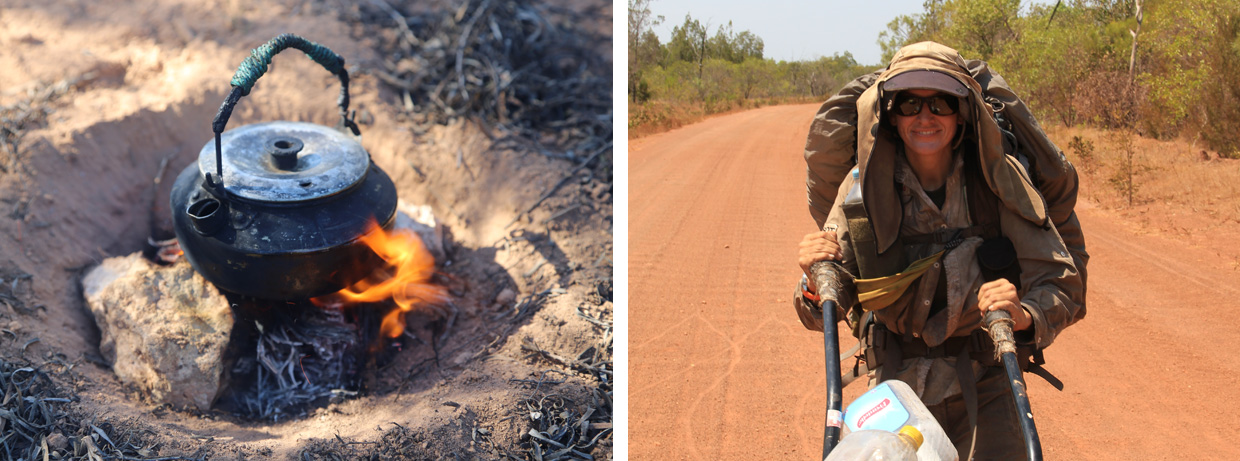
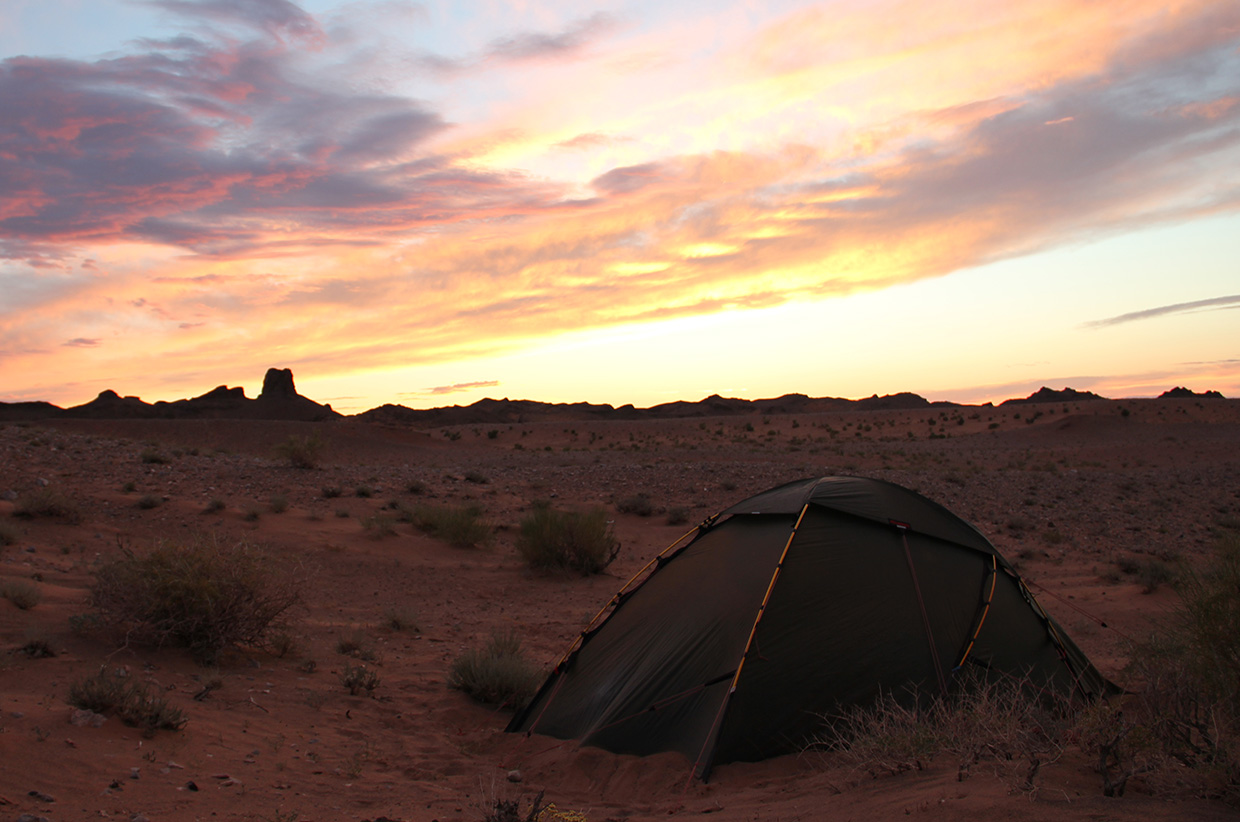
I remember on one occasion I had wolves around my tent in the morning in the Gobi. I cross Mongolia, and the Mongols kept telling me there were wolves everywhere. I had seen no tracks and I laughed at them. They were scared like hell of them. Once I camped in the Gobi on rocky ground and I could not see any tracks. I went to bed and slept. I woke at 4am and asked myself, why am I up? I was completely alert, which has never happened before. There was no noise whatsoever, nothing was wrong at all. I thought it strange. At 5am, I was in my sleeping bag and I heard them: five wolves howling right next to my tent. But I was excited by this. I had the same problem with the mountain lions in Patagonia. They are not going to be aggressive just to be aggressive. I was already past that six months point – I had that connection. I was able to let them to know I was not food for them and that I was not afraid of them. Eventually they left. All they wanted was to give me a message – this was their territory and it was time for me to move on.
How did you deal with despondency – the periods on every expedition where things are not going right and you begin to question everything?
The first six months is like being in a washing machine – everything is painful. Body and mind. You can hear your friends and family in your head. It’s that onion again – peeling away that skin and hardening yourself. You are going through hell in that time. Everything is a challenge. Eventually, the noise stops. Suddenly, you are in harmony with nature. It’s all gone and then it’s not just another day of walking. That is what I am looking for. You live in the present and you are connected. You lose the sense of self. It’s a hard time, but the rewards once you reach that period of harmony, where you understand the immediate terrain around you, are wonderful.
Also, I am so bloody busy during the day! That is a fact – you cannot just sit down and say ‘I am tired’. You have so much to do – you need to camp, you need to get your sleeping bag out, you need to find a few sticks to make tea, there is energy involved in every process of your day. This is not the normal world and this process is actually very rewarding. Every small thing we appreciate now, even washing ourselves, is gone. And the smell – this is the real me. You don’t realise how smelly you are normally! When you live in the open, that’s what it’s like. Then you have to walk, you have to think about all the problems outside – human beings, animals, weather. You don’t have time to get really sad or lonely.
What did you eat? How did you trap it? What tools did you use?
All the time, I scan the landscape to see what it can offer me. Frequently, I was forced to anticipate huge storms in Mongolia – from sandstorms to snowstorms, mudslides, flooding, everything. On one occasion, for example, I noticed the camels were moving very quickly in a certain direction – they were escaping the storm long before it came and I did the same. It is all about how you read the landscape. That includes food and water. I used a slingshot and wire to trap little rabbits. You need to understand the rabbit – what does he want? Understand the biosphere and work out what where they might be. Look for their stool, their tracks. I also had the chance to eat some wild onion which was a great source of vitamins for me. I am always scanning the landscape to understand it and the animals and plants which inhabit it.
How has your life changed since the TED talk and the National Geographic Award?
It’s all been an amazing experience. When I was a little girl, I wanted some pocket money. We did not have much money, if I want money I had to work for it – I could have 1 Swiss Franc, but I would have to collect a hundred slugs in the garden for it. When I had enough money, I would buy National Geographic. Normal kids would buy gum or sweets and I bought this magazine. I was dreaming about this amazing world out there and I did not have access to it. For me, the nomination for the award brought back this little girl. And showed me that no dream is ever too big.
What are you doing next?
In May 2015, I will be crossing the Kimberley in the northern part of Australia. There is no access there, there are no roads. Aborigines live there, but only next to the sea. Even they don’t live inland. I will survive in this area with a machete and a small pack. I have always wanted to go with a machete and nothing else. This is the ultimate dream for me. I think it will take around four months to cross.
Sounds dangerous – does it worry you?
I am excited. There will be no human beings there. It’s nature full-on. Nature challenges you big-time. It is in your core. You constantly need to adjust to nature. You need to suck in all this nature – the way it lives, you need to listen and learn. It is the only way to survive. I want to be this bridge between humans and nature. I want to show that women can do it – it is not about muscles and strength. You need to understand your environment and adjust to it. There is a lot of preparation – what I can eat, and also there are a lot of crocodiles so I need to find a way to cross this river. This is only possible because I have two decades of experimentation, knowledge and experience behind me.
In Sidetracked Volume Three Sarah describes her encounter with wolves in the Gobi Desert. You can buy your copy here.



